PowerColor Radeon 9800SE Review
PowerColor Radeon 9800SE
As if the mid-range graphics card market wasn't confused enough, the Radeon 9800SE is here to mix things up a bit. This card from PowerColor is pretty cheap, but sometimes you get what you pay for.
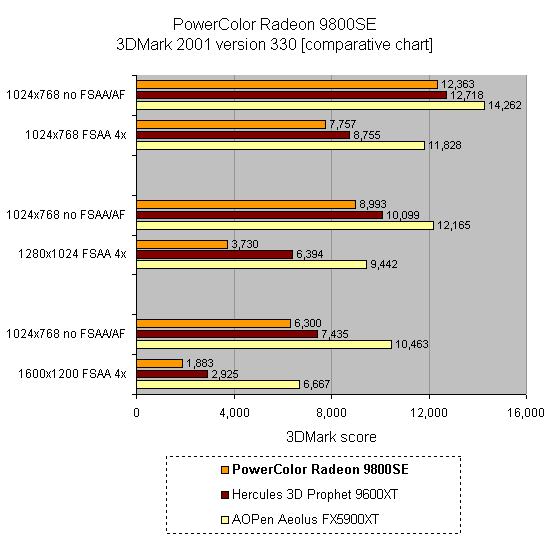
Verdict
Key Specifications
- Review Price: £137.00
The mid range graphics card market has filled out significantly in recent months, and could now almost be described as overcrowded. The flurry of nVidia and ATI referenced designs in the £120 to £150 range is possibly more abundant than at any time in the PC’s history. For your average customer, it is also becoming increasingly confusing.
Now a few years back everything was very straightforward. The now defunct 3Dfx released chips such as the Voodoo 1, 2 and 3 and each progression was more powerful than the last. nVidia started out the same way too, with the TNT, TNT2, and GeForce 1, 2 and 3. But things started to go wrong with the GeForce 4, suddenly we were faced with a range of cards that, at one end of the scale were the most powerful in the industry’s history, and at the other, offered no more bang for your buck than an old GeForce 2
So to further muddy the mix in today’s market, we have the latest variation on the ATI design, the 9800SE. The 9800SE comes in two flavours, a more budget oriented card with 128bit memory architecture and a more expensive, more powerful offering with 256bit memory architecture. The 128bit version is similar to the PCB design of a Radeon 9500Pro, while the 256bit version is closer to the PCB of the Radeon 9700Pro.
Maybe now you can see my problem with the current labelling of graphics cards. More seriously, however, is that there is a significant power difference between the cards and with generic boxes regularly used, the customer can sometimes be unaware of what they’re actually getting.
This was the case with the card we received from PowerColor. We knew we were getting a 128bit card, even though the box itself referred to the card as 256bit. If this worries you, and it did worry us, you can check which card you are buying by looking at the card’s memory configuration. If it is aligned in an “I” shape you have the 128bit version, if the alignment is in an “L” shape you have the 256bit version. So at the end of the day, if the price of a so-called 256bit card appears too good to be true, it probably is.
So enough of the problems with the outside of the box, what’s inside? Well, the bundle is rather good. PowerColor includes a full copy of WinDVD4, a games pack including Splinter Cell, Warcraft 3, Big Mutha Truckers and the highlight, a boxed version of the latest in the Tomb Raider series, The Angel of Darkness. PowerColor has also included S-Video and composite cables, as well as a DVI converter.
Looking at the card itself, you will immediately spot there is no direct cooling provided for the memory chips, which is surprising, but at no time did I encounter any stability issues.
Installation was simple enough, though like just about all the higher end cards these days it does require more juice than the AGP port can provide, so a secondary power cable is included which acts like a splitter. I personally found that the length of the cable provided was a little short, and there was not much slack once the card was hooked up. A little extra length would not have gone amiss, especially for those with crowded cases.
Now, as you would expect, the 2D performance of the card was excellent, this aspect of just about any modern card can be taken as a given, and even before this was the case, ATI was one of the best around in this department. However, it’s when we turn to 3D that the weaknesses of the 9800SE become apparent.
With our 9800SE cut down from eight pixel pipelines to four, and featuring 128bit memory architecture as opposed to 256bit, the speed of the memory needed to be quick. Sadly, it isn’t. With 128MB of DDR1 memory rated a just 270MHz, giving an effective clock speed of 540MHz, this is way down on the competition.
Placed alongside MSI’s nVidia based GeForceFX 5700TD Ultra, with memory running at a combined clock rate of 900MHZ the card shows its lack of race pedigree. Even Hercules’ ATI based 9600XT can chip in at 650MHz, with a standard 9600XT running at 600MHz. And while AOpen’s Aeolus FX5900XT, based on nVidia’s latest and most expensive midrange chipset priced at £149, only delivers just 700MHz, it flies along thanks to its 256bit architecture. So as we suspected, with PowerColor’s 9800SE losing memory bandwidth to its rivals, this had a crushing effect on performance.
The 9800SE lagged way behind its rivals in the synthetic 3DMark tests, registering a score of just 1373 at a resolution of 1,024 x768 with 4x anti-aliasing and 4x anisotropic filtering in 3DMark03. This was down nearly a third on all three of its rivals. And in real world games performance, our 128bit 9800SE faired little better.
In the Unreal Tournament 2003 Flyby at 1,600 x 1,200, with 4x anti-aliasing and 4x anisotropic filtering the card managed under 18fps, approximately half of what the FX5900XT and FX5700TD Ultra achieved under the same conditions. Even the 9600XT turned in a respectable 27.3fps thanks to its higher memory clock rate.
In Serious Sam 2, the results were repeated with the our 9800SE hitting only 19.6 fps at 1,600 x 1,200, with no anti-aliasing and no anisotropic filtering compared to the FX5900XT, FX5700TD Ultra and 9600XT which achieved 50.1, 43.1, and 30.7 respectively.
If there is a bright spot to the card, it’s that it can be soft modded but even so I noticed less than a 10 per cent increase in performance.
”’Verdict”’
A disappointing card with a misleading name. The 128bit version of the 9800SE lags behind the 9600XT, and is smashed by nVidia’s FX5900XT and FX5700 Ultra chipsets. The card is slightly cheaper than its rivals, but the 128bit version of the 9800SE offers nothing that would convince me not to spend a little bit extra elsewhere.

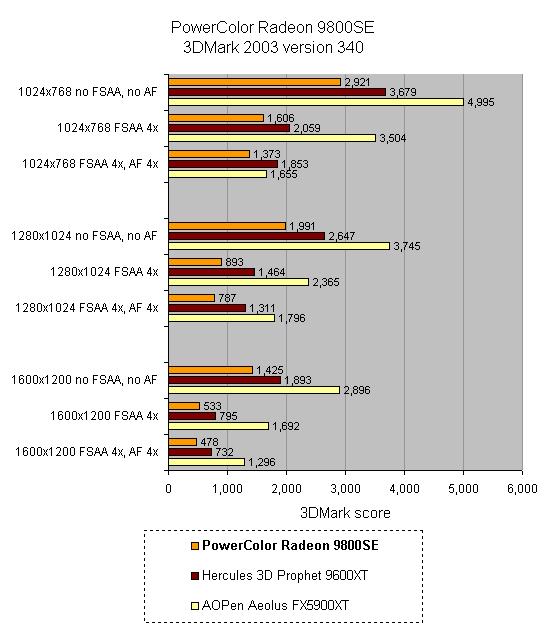
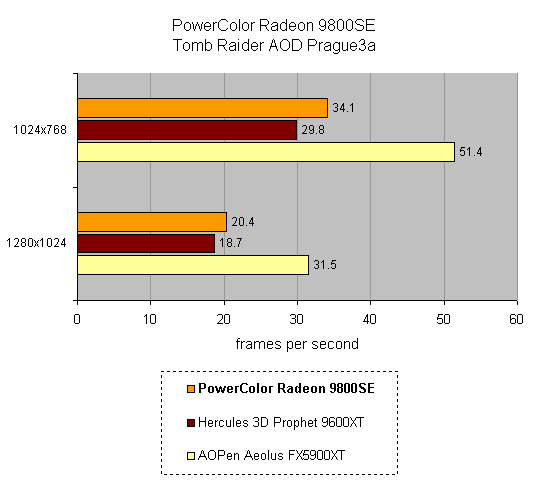
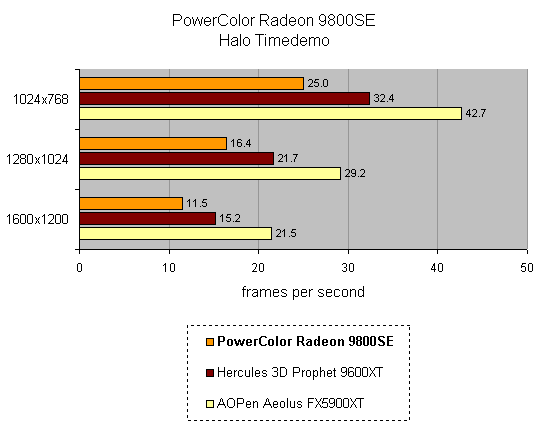
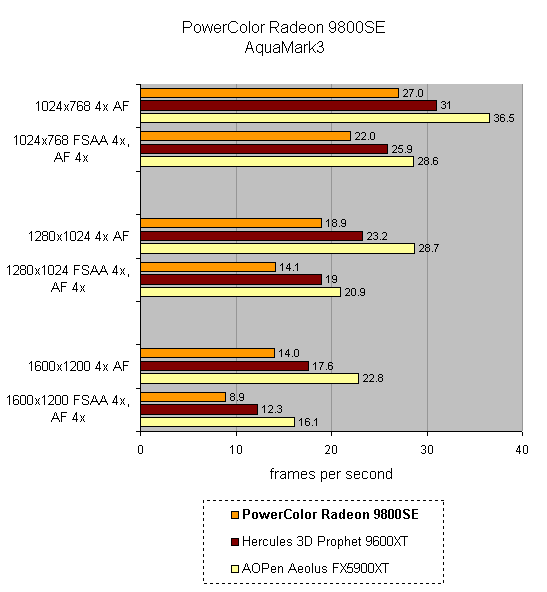
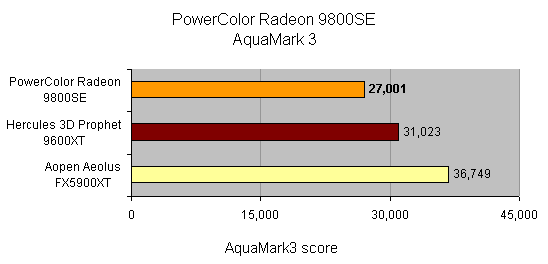
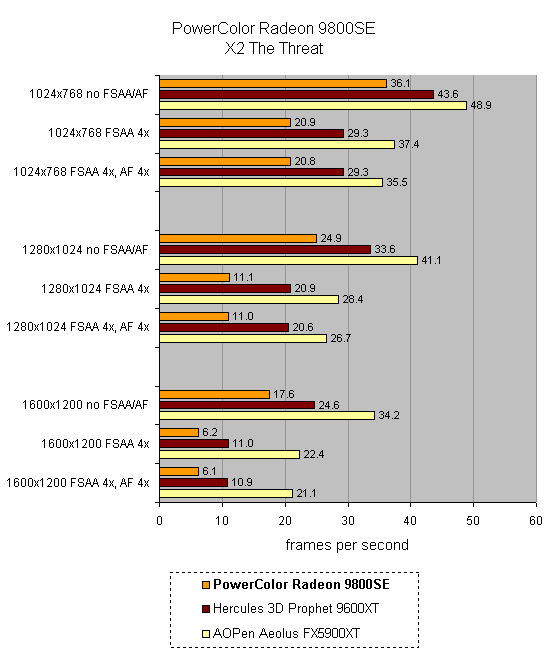
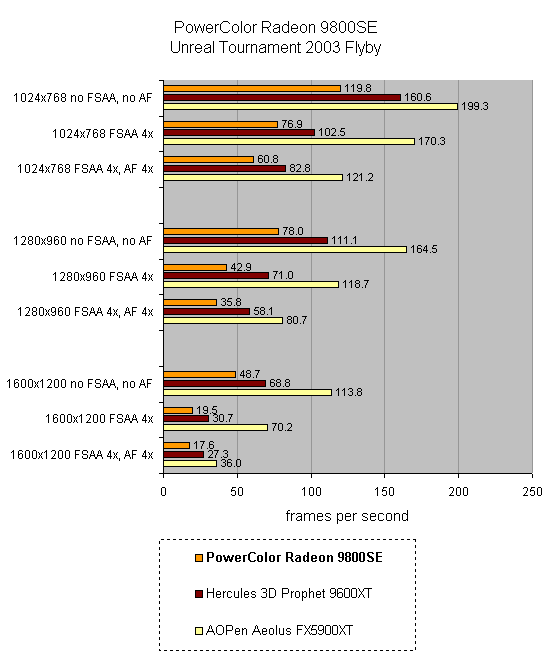
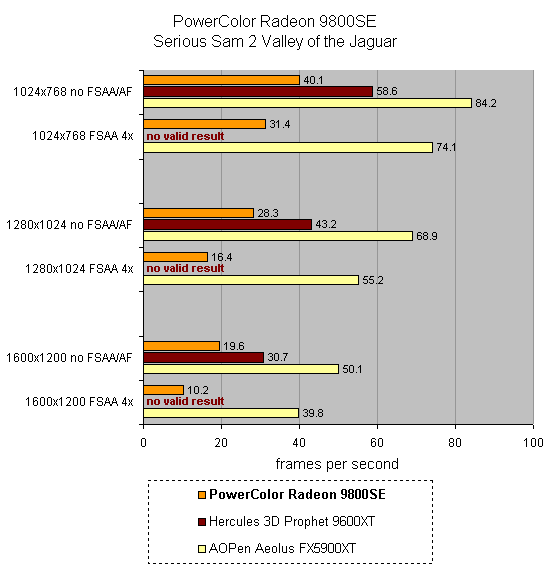
Trusted Score
Score in detail
-
Value 5
-
Features 5
-
Performance 7

